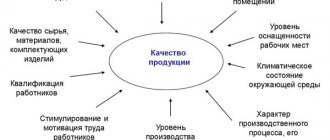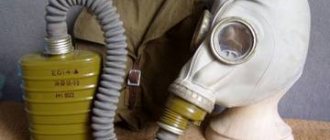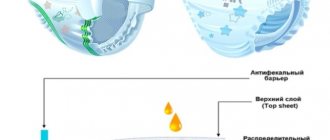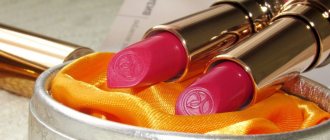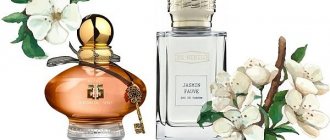Open dresses - August
The same applies to simple summer dresses, the season for which ends just in August. The bonus of such a purchase is that you will already know what you will wear in late summer or early spring next year. And you can plan to buy accessories in the fall.
Photo: PantherMedia/Scanpix
The warranty period for seasonal goods is calculated from the beginning of the corresponding season
For seasonal goods, the warranty period is calculated from the onset of the corresponding season, the onset of which is determined by the authorized state body of the constituent entity of the Russian Federation, based on the climatic conditions of the location of the buyers. The Supreme Court recalled this in Resolution No. 305-AD16-2121 of 04/05/2016.
Based on the results of an inspection of the consumer’s appeal, the administrative body identified a violation of the requirements of legislation in the field of consumer protection - the seller’s refusal to return money or exchange low shoes for a similar product. The refusal was justified by the fact that the manufacturer did not establish a warranty period for the product, and therefore the warranty period is considered to be 14 days from the date of purchase. However, on the packaging of the product, the manufacturer determines the season of the product: spring-autumn, the service life of the product is 2 seasons.
In accordance with Article 19 of the Law of the Russian Federation dated 02/07/1992 N 2300-1 “On the Protection of Consumer Rights”, paragraphs 30, 31 of the Rules for the sale of certain types of goods approved by Decree of the Government of the Russian Federation dated 01/19/1998 N 55, the consumer has the right to make demands on to the seller (manufacturer, authorized organization or authorized individual entrepreneur, importer) regarding defects in the goods if they are discovered during the warranty period or expiration date.
For seasonal goods (clothing, fur goods, shoes and other goods), the warranty period is calculated from the onset of the corresponding season, the onset of which is determined by the authorized state body of the constituent entity of the Russian Federation, based on the climatic conditions of the location of the buyers. Resolution of the Governor of Khanty-Mansi Autonomous Okrug dated February 10, 1999 N 54 “On the timing of the onset of seasons in the district” established the timing of the onset of seasons: spring - from April 1, summer - from June 1, autumn - from September 1.
Having assessed the evidence presented in its totality and mutual connection, guided by the provisions of the Law on the Protection of Consumer Rights, the Rules for the sale of certain types of goods, the courts came to the conclusion that there was an event in the applicant’s actions and the elements of an administrative offense provided for in Article 14.15 of the Code of Administrative Offenses of the Russian Federation, and the applicant’s guilt in committing it , recognized that the procedure and statute of limitations for bringing to administrative liability established by part 1 of Article 4.5 of the Code of Administrative Offenses of the Russian Federation were observed, the amount of liability was determined taking into account the provisions of Article 4.1 of the Code of Administrative Offenses of the Russian Federation. The court did not establish the presence of mitigating or aggravating circumstances.
What is needed to “chip” shoes?
To complete the process itself, you will need a device for issuing stamps. This is new equipment and is only available upon special request. And the sooner it is formed, the more time the subject will have to put it into operation.
But if you look at how to “chip” the remains of shoes, in this case a simpler algorithm works. As we have already indicated, a regular printer with DataMatrix printing capabilities will also work. And enterprises always have such equipment in stock.
Seasonality in the shoe business, what it is and how to work with it
Seasonality can be managed in any business, and footwear is one of the most illustrative examples of such strategies. SR fashion sales expert and business blog author Elena Vinogradova examines in detail the reasons for seasonal fluctuations in the shoe business and options for solving problems.

Elena Vinogradova is an expert in sales and purchasing in the fashion business.
Author of a business blog for clothing, footwear and accessories stores on Instagram - @fashion.business.blog. www.instagram.com/fashion.business.blog How do you generally understand whether there are seasonal fluctuations in business?
If an analysis of a company’s sales over the past few years (at least three years) shows declines and rises in certain, annually coinciding periods, we can talk about seasonality in sales. Fluctuations within 10-20% of the average monthly sales volume are considered moderately seasonal, especially if there is stable revenue growth at the end of the year. But if sales volume in certain months decreases by 30%, there is a pronounced seasonality of the business. This is easy to see in the sales of shoe cosmetics and accessories - creams, paints, impregnations, brushes and other accessories. Sales usually peak in October-January, followed by a decline in April-August. The reason is weather factors that are important for sales of shoe cosmetics. Shoes need to be cleaned all year round, but if during the season of rains, slush and reagents this is vital for shoes, then in the summer few people remember about care. Of course, in this segment there are consistently popular items: laces, sponges and shoe horns, but due to their small weight in revenue, they do not compensate for profits during periods of falling sales.
What to do in this situation?
- Adjust the assortment, constantly introducing new products, due to which the overall sales volume will increase. For example, for the spring-summer season it could be: creams of a wider color palette (because there are much more colors in the summer collections), impregnations for different types of materials (for the same reason for the richer seasonal diversity of the range of shoes): textiles, metallized leather, varnish and various combinations of materials.
- Combine items of non-seasonal and seasonal demand, creating sets at an attractive price for the buyer, when purchasing a set is more profitable for the buyer than purchasing each item separately.
- Work with staff on motivation and sales standards for related products.
Seasonality is typical for many products. At the same time, it is important to understand whether the product really has a pronounced seasonal nature, or whether demand for it can be maintained at the required level even during a recession.
If a company produces, for example, only rubber shales, then to neutralize the seasonal weather factor, you can enter new markets: where it is summer all year round. In addition to smoothing out the seasonal sales schedule, this will allow you to receive continuous feedback and improve the product, improving its characteristics. There is a strategy of focusing on minimizing costs during a seasonal decline in sales, and it also works, but sometimes you can argue with external factors. Of course, you need to prepare for the launch of such programs by calculating all the possible advantages, costs and risks.
When to introduce seasonal products?
Presentation of a collection is one of the tools that can greatly influence the sales of a shoe store, both positive and negative.
What does a customer see when entering a store?
Firstly, that they sell shoes there.
Secondly, which one? If in October there are mules and espadrilles in the window of an ordinary Russian store, then the chances of attracting customers and large sales drop sharply. The law of “first impression” will work in favor of seasonal assortment.
The timing of the display of a seasonal collection in a store is determined by sales statistics, climate and price segment. The weather factor is obvious, let's move straight to the numbers. Successful business is driven by analytics. Based on sales analysis, you form:
A) store assortment;
B) the share of goods of certain groups in the hall and on the display case.
In the latter case, it is important to take into account several parameters: type of shoe, price and seasonality. If the store is a multi-brand, then we also analyze sales by brand.

Example:
Given:
children's shoe store, month of August, mass market segment.
The demand for summer shoes has already noticeably decreased, the school year is ahead and the top sales are the school assortment (shoes, moccasins, low shoes, as well as sports themed sneakers, slip-ons and sneakers). Plus, buyers are beginning to show interest in autumn collections: boots and boots.
According to statistics from past seasons, in August school collections bring in 50-60% of revenue, provided sales start no later than August 5-10, summer - 30%, autumn - 10%.
Question:
What might our store look like in August?
Solution:
- The key assortment is seasonal. In our example, school and sports shoes will take up 50-60% of the display in the window from August 5 to the end of the month.
- In the sales area, the seasonal collection will occupy the same share and will be located in priority areas, on “golden” shelves - at eye level and arm’s length of the buyer.
- The remains of summer shoes also need to be sold. We place them further down the hall, still in the warm zones. With a mixed display, you can place sandals on the lower levels; the buyer will still pay attention to such an assortment, especially considering its cost with maximum discounts.
- We place the autumn collection closer to the end of the hall in the “cold” zones. A buyer interested in this assortment in August will willingly follow it deeper into the store.
As a result, we get a layout that will provide us with:
1) Sales of seasonal school assortment.
2) Reducing the remains of the summer collection.
3) Generating demand for the autumn collection and understanding what the buyer needs in the first place.
Of course, in the Russian market, seasonality has pronounced regional specifics, sales schedules and structure, the boundaries of the seasons in the southern and northern regions are different, so the issue of presenting seasonal goods must be approached individually. The percentage of summer and autumn shoes in August on display and in the hall will be determined by the climatic features of the region.
Price segment
also has a direct impact on the timing of the presentation of seasonal collections.
Standard generally accepted seasonal periods: February-July for spring-summer collections and August-January for autumn-winter collections. In the economy, mass market and mid-price segments, companies mainly adhere to these deadlines, launching with new products at the beginning of the period or with a shift to the right by 2-4 weeks.
In the premium and luxury segment, the presentation of seasonal collections traditionally begins earlier: in parallel, sales go on and new products arrive. The new collection is located in the back of the hall and its presence is gradually increasing. When new items take up more than a third of the assortment, the priorities in presentation change - the new collection comes to the fore, discounted products, decorated with POS materials, go into distant zones. The assortment is constantly updated and this is the right situation, giving the client the right to choose.
Sales periods for seasonal assortments in premium and luxury products also often start earlier - in May, because clients in the high price segment go on vacation early and for a long time.
If we take Western experience, European brands act in a similar way, accustoming the client to a new collection already at discounts - for example, from the end of December-January. Management understands that there will not be big sales, because not everyone is ready to spend spontaneously. The goal is to “watch” the client so that he gets acquainted with new products and makes a purchase later, already understanding where and what he saw.
In my experience, this scheme - shifting the traditional schedule of presenting seasonal collections to the left - is generally more effective today. The rule “brought it first, sold it first” has not been canceled. Plus, you get more frequent updates of collections (which is what the buyer now expects and demands) and the opportunity to increase the markup on sales due to the parallel sale of new items at a regular price.
When shifting the receipt schedule to earlier dates, you need to coordinate this with the capabilities of suppliers of goods and services (factories, wholesalers, transport companies). And also take into account the possibilities of the retail space in terms of equipment capacity.

When seasonal product sales decline
During the season, we may observe a drop in sales of seasonal collections that is not related to weather factors. What influences this? Let's look at some reasons:
- The size charts are knocked out, the buyer cannot choose a pair.
- Lack of updating the assortment in the store: the buyer is used to it and sees the same thing for a month or two.
- Decline in purchasing activity: traditionally after the New Year holidays, in the second half of January and February, and in the summer months during weekends and holidays.
The reasons have been identified, we are deciding how to proceed
1. Embossed size grids: we group models in single sizes into separate stands or collect size grids as much as possible in stores using online transfers.
2. Lack of assortment updating: we change the display case at least once every 2 weeks, the hall - the same. The modern buyer is focused on new arrivals. If there are no new products for a month, we create them artificially using visual merchandising:
- swap zones and collections of brands (if the store is a multi-brand);
- changing the display on the islands and shelves;
- we collect new kits;
- creating other color stories;
- We place other accents with the help of accessories: bags, hats, stoles. The importance of a complementary assortment in presenting seasonal goods is enormous. When displayed correctly, bags, gloves, belts and scarves help sell the main product - shoes.
The goal of regularly updating the assortment is to catch and hold the buyer’s eye, draw attention to new models, and constantly maintain dynamics and life in the store. Often, noticing changes, buyers ask about new arrivals and even notice models that they have not seen before.
3. Decline in purchasing activity: companies operating in the fashion business offset these periods with seasonal sales: at the end of January and February there are maximum discounts on winter collections; in July you can buy current summer shoes at a profit.
The presentation of seasonal collections at the sale has its own characteristics:
- At the first stage, the most popular assortment is presented at a discount in the entrance area and on the island equipment. At the same time, in the hot zones of the store, seasonal goods are presented at regular prices. Place deeper discounts in the back of the store, guiding the buyer throughout the sales floor.
- At subsequent stages of the sale, when the entire seasonal assortment is discounted, the logic of the display changes in the opposite direction. The main task is to attract traffic to the store, which all market players are fighting for. Therefore, place maximum discounts in the first third of the store, and minimum discounts in the back of the store.
In addition to discounts that help sell seasonal assortments, the sales period can be used to prepare for the sale of the next collection:
- carry out planned renovations or relocation of the store;
- prepare staff for the new season: training on the product, sales techniques and service will help the team maximize its strength for the seasonal peak of sales.
This article was published in issue 159 of the print version of the magazine.
Demi shoes for children - when to wear?
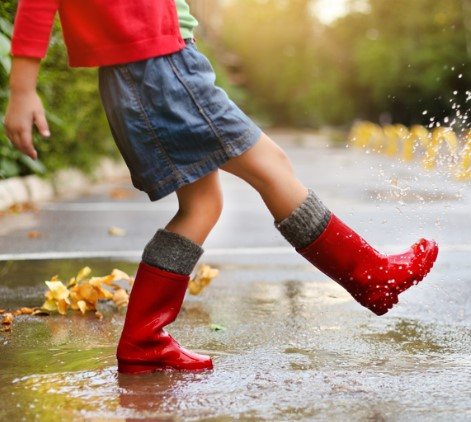
Children's bodies are especially susceptible to colds and viruses. Our great-grandmothers also reasonably reasoned that “all colds come from the feet.” To preserve children's health, their shoe arsenal should include:
- boots for dry and warm weather;
- rubber boots for walking in the rain with a special stocking or woolen sock;
- insulated shoes (possible on a bike) for the first autumn or last frosts.
Important! When choosing shoes, especially for children, it is better to give preference to completely natural or multi-layer materials, inside which the foot will “breathe”.
Demi-season shoes should remain presentable, not deteriorate from water and dirt, keeping their owner's feet dry and warm . Therefore, when purchasing, you must be guided by the weather conditions of a particular area, the nature of operation, financial capabilities and concern for your own health.
Instructions for using Formidron for shoes
How to remove a greasy stain from leather shoes?
What temperature can you tolerate comfortably in these shoes?
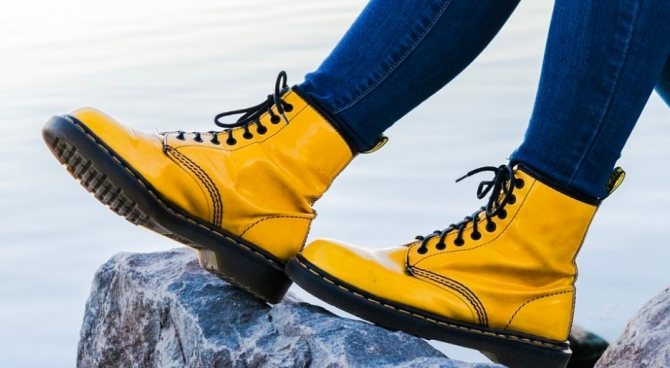
Optimal for long (within reasonable limits) walks – from 0˚С to +10˚С. If the thermometer is negative or there is high humidity (for example, during heavy rain), staying in demi-season shoes for more than one hour will cause discomfort. For those whose work involves long periods of exposure to adverse weather conditions, it is better to choose special equipment .
Deadlines and stages
This is not information taken from legislative sources, unofficial documentation. But representatives of the CRPT have repeatedly referred to three main stages through which their initiative will be fully implemented.
Media and thematic forums, speaking about footwear labeling 2021 for retail, tell us what implementation dates await us:
- July 1, 2021. At this stage, the only real requirement that has no exceptions is registration on the “Honest Sign” resource. In addition, applications will be initiated.
- October 1st. By this time, adaptation to the new equipment is planned. Stores and other entities must be equipped with technical means and operate them in their activities. The question remains, when the 2021 shoes are “chipped,” what to do with the leftovers? It's simple, they are subject to the same procedure. That is, each couple is required to receive a code. And selling it on the counter without the appropriate marker will be illegal. Such an act threatens with serious sanctions, including deprivation of the right to operate.
- February 1, 2021. And now the time comes for those same punishments. Selling without a code is prohibited; all products are subject to mandatory and strict labeling. No exceptions.
Once again, please note that specific dates are subject to change. This is just a sketch from the organizers. At the moment they are focusing on it, but they may adjust it in the future. True, an adjustment is expected in the direction of increasing the terms, not decreasing them. This is a regulation in case everything goes according to plan without any deviations.
Performance at the MosShoes exhibition on March 13, 2021 (third part)
Instructions for “chipping” leftovers
Half of the products in circulation can be stored in warehouses. It is important to understand that in this case the same regulations apply. It does not matter to the CRPT institution where the object is physically located at the moment. All responsibilities for applying codes fall on retail. Products can be stored in a warehouse for as long as you like, but in order to sell it, it will need to be “chipped.”

Having studied how to label leftover shoes in a store or warehouse, we found out who would be responsible. But it is worth understanding that there are currently no sanctions for storage without codes. And the time for implementation after receiving the “chip” is 2 years. Therefore, sometimes you shouldn’t even rush to sell the entire lot.
In what weather can you wear demi shoes?
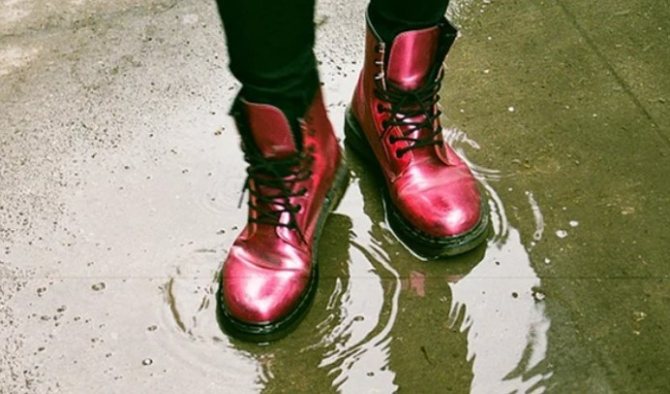
Operation of shoes
What should you avoid?
– wear shoes with a thread (stitched) method of fastening the sole in damp weather, wet snow, this can lead to moisture penetration into the shoe;
– wear shoes in a damp or wet state for a long time;
– avoid exposure of the shoe upper material to alkalis, acids, and active solvents.
Prohibited:
– wear patent leather shoes on gravel, crushed stone, where there is industrial salt;
– wear shoes with leather soles (or with leather pads on the soles) in damp, rainy or snowy weather, as well as on gravel, crushed stone, where there is technical salt;
– wear patent leather shoes at temperatures below – 5C (winter types of shoes below -15C) above +25C;
– wear shoes made of naplak in damp, rainy weather, as well as at temperatures below – 15C;
– wear shoes made of artificial materials at temperatures below -10C (winter types of shoes below -25C);
– wear rubber shoes at temperatures below -10C, as well as when working with fats, oils and acids;
– wear shoes with tunit or KPR soles below -20C, wear shoes with PU soles below -10C;
Failure to comply with the temperature regime for shoes made of patent leather, artificial leather and plaid can lead to the formation of cracks and rupture of the front surface of the shoe.
Recommended:
– do not wear new shoes for long so that they can adapt to the shape of your feet;
– when putting on and taking off shoes, use a shoehorn to avoid deformation of the heel, tearing the heel seam and tearing off the sole; do not pull it by the straps and elastic bands;
– high-heeled and platform shoes are not recommended to be worn for more than 2-3 hours, as well as for people suffering from swelling of the feet or excess weight, changes in the foot (flat feet, club feet, etc.);
Labeling leftover shoes in a store: instructions and procedure
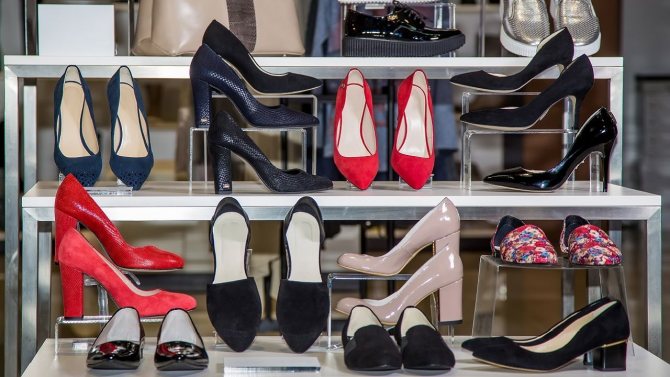
The retailer is the last entity to come into contact with the product. After it, it goes into the hands of the target buyer. Therefore, the organization is tasked with mandatory monitoring and informing the head center about the fate of each product.
It all comes down to two key tasks. The first is to receive the goods, a message to the server that the product has entered the store and has been safely sent to the counter. In addition, at this stage the server authorizes the display if it considers the product legal. The second task is implementation into the hands of the client. And a message to the server about the release of the product.
Caring for suede shoes in the autumn-winter period: Independent actions vs Professional work
Suede shoes are always elegant and stylish. This natural material attracts the eye with its matte velvety feel. If you imagine how soft and elastic suede shoes, boots, and boots delicately lie on your feet without causing any discomfort when worn, it will become clear why it is impossible to refuse such shoes!
A difficult question: how to clean suede shoes
When purchasing, you only have to think about one thing: how suede shoes will be cleaned if you wear them in the autumn-winter period. If the rules are not followed, the material loses its attractiveness:
- spots appear on it;
- he is shiny;
- gradually changes color, and unevenly.
Suede gets dirty easily and quickly, and contact with water is contraindicated. Even with modern processing technologies, which are constantly being improved, any manufacturer will indicate in their recommendations that this is extremely undesirable. Should practical people give up suede shoes as cold weather approaches? Definitely not!
Proper care of suede shoes
Many experts give advice: buy suede shoes for indoors, weekends and holiday events, and not for everyday wear. This is not a way out, but it exists. For owners of such products, professional dry cleaning of suede is available, but it also does not hurt to follow a number of rules. Fans of great suede shoes get to know them in advance.
Boutiques and shoe stores that care about their reputation will definitely offer you a special protective composition when buying a new pair. They are recommended to treat the surface of products in accordance with the instructions.
A qualified seller will select the drug, focusing on the characteristics of the products declared by the manufacturer and the manufacturer itself. By increasing the water-repellent properties, you preventively protect your shoes from exposure to moisture, dirt and salt, which is inevitable on city streets in the autumn-winter period.
Prevention is necessary, but the film formed after applying the drug, alas, will not prevent the appearance of contamination. It will just make cleaning easier. Autumn rains, winter slush, poor quality sidewalk cleaning - all this leads to unpleasant consequences.
Pay special attention to drying wet steam:
- You can first stuff newspapers into your shoes so that they absorb excess moisture;
- special shoe lasts are needed so that creases and folds are straightened out, and the product takes on its previous shape;
- Heating devices are prohibited even in the vicinity of drying suede - only room temperature, so as not to cause hardness and brittleness, shrinking and cracking.
To clean suede at home, stock up on a special porous sponge or brush. It will also be offered to you in a reputable store when purchasing a new pair. Buy a foam cleaner for it. Never use solvents or chemical bleaches! The procedure should be carried out in a timely manner, without leaving dust and dirt for a long time.
To remove stains and grease deposits, you will need another tool - a brush with teeth (rubber or rubberized). Also stock up on a crepe brush. With its help, owners of suede shoes renew the velvety layer, returning it to its original dullness and attractiveness. Carry out all cleaning activities in advance, and not before leaving the house.
Yes, taking care of suede is not easy. Take a look at the dry cleaning price list and evaluate whether it is worth doing the procedure yourself with the risk of ruining your elegant and delightfully soft shoes. It is better to use the services of specialists than to make cleaning products from baby soap, powder, ammonia, vinegar, or steam suede over a pan or kettle to restore the original velvety.
Suede does not tolerate neglect. Take care of her and she will take care of your feet and legs in return and will not disappoint. In such shoes you will always look your best and feel like the center of attention. A great mood and effective results for any event are guaranteed!
Shoes for winter: what to check first
Upper material. The best choice for winter is natural materials. They are comfortable for your feet, they do not create a “greenhouse effect” and last at least three to five years, or even more with proper care. A universal solution for women and men is genuine leather. It provides natural air exchange and is easily supplied during wear, taking the exact contours of the foot. Therefore, if boots or shoes are slightly compressed on the sides (but not too short!) - do not worry, after a few days the shoes will perfectly fit the shape of the foot. Good alternatives to leather are suede and nubuck. These materials require special care, but they look interesting in unusual colors: red, green, blue, red. It is enough to regularly treat the skin with special care products - this will help reduce the negative effects of water.
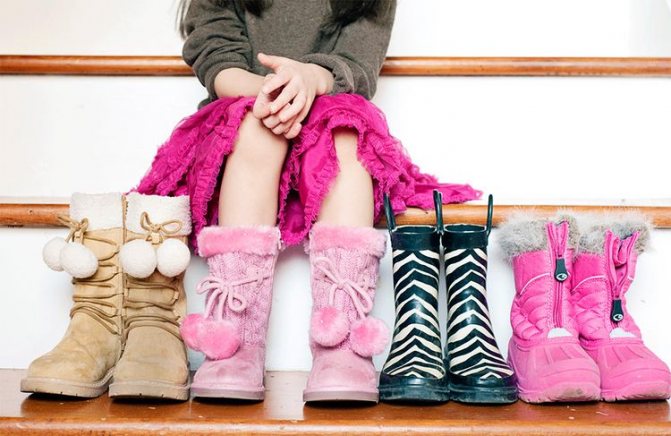
Insulation. Warm winter shoes are made using natural fur or high-tech material (a striking example is Thinsulate or Gore-Tex). In some boots for “European winter” the fur is located only in the foot area, and above there is a lining made of genuine leather. If real sheepskin is used, it warms well and lasts a long time without falling or pilling from frequent wear.
Sole. The thickness of the sole in women's models for winter is at least 7 mm, in men's models - 10 mm or more. Popular materials for making soles are PVC, thermoeloplast and polyurethane. If you need non-slip winter shoes, choose from models with ridged, moderately flexible soles. The deeper and more prominent the treads, the better the grip of the shoes or boots on slippery surfaces. Carefully inspect the area where the sole and upper material meet: they should not come apart when bent.
Heel. The recommended heel height for winter in women's models is 4-6 cm, but the final choice should also depend on the last, as well as personal preferences. In addition to height, width is important: it is important that it is stable. Wide heels confuse you - buy those models where they are decorated and are important design elements. And if you need to choose model-style winter shoes, make sure that you can overcome the most dangerous sections of the route by car.
Size. The appropriate winter shoe size is always slightly larger than what you are used to wearing in the summer. For example, if you buy sandals of size 39, for boots and boots with fur this figure should increase to 40. To prevent your fingers from suffering from the cold, they need a little extra space. Plus, you will probably also have to wear a warm sock.

